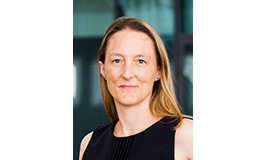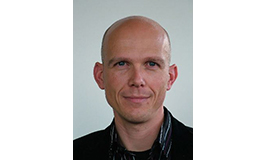Bone Mechanics and Mechanobiology Special Issue
The past decades have seen a profound change in our understanding of the interplay between mechanical loading and bone metabolism. Classic studies of bone mechanics have been linked to our wealth of knowledge on bone biology, through the exploration of mechanosensitive processes governing bone homeostasis, or perturbations driving a disruption of bone health.
Aligned with the over-arching scope of the eCM journal, we recognise that bone mechanics, in the context of bone health, cannot be considered in isolation of bone biology. Osteoblast and osteoclast activity are governed by mechanosensors, whose response in turn is strongly influenced by the composition of the extracellular matrix, which is responsible for the direct transduction of mechanical loads to the cell. In addition, cell signalling occurs independent of direct mechanical loading through the transport of cytokines or stimulation of the cell through fluid shifts in the tissue. This all occurs against the backdrop of individual genetic factors governing mechanosensitivity.
Bone mechanics and mechanobiology encompass a broad range of topics spanning from a basic understanding of the mechanics of normal and disturbed bone remodelling, through exploring multi-faceted bone-biomaterial interactions in disease treatment options and on to tissue engineering applications for the formation of new bone tissue. The constituent-based evaluation of bone mechanics, through experimental or computational methods, provides insight into the link between the extracellular matrix properties and load bearing capacity of the organ. In vitro models of bone, ranging from cell-based constructs up to ex vivo organ explants, provide controlled systems for the study of healthy and pathological bone metabolism and related regenerative strategies. The elucidation of mechanobiological effects in health and disease is facilitated by unique loading bioreactor systems. The increasing complexity of computer simulations allows an unprecedented level of detail in the analysis of bone remodelling, in response to loading, disease state, local biochemical environment and modified mechanical conditions resulting from biomaterial or medical device implantation. Modern three-dimensional biofabrication methods provide not only a further avenue for the development of bone model systems with a high biofidelity but point towards new opportunities in regenerative medicine. In all the above, bone mechanics and mechanobiology are inseparable, yet often are reported in isolation in the literature.
Therefore, this Special Issue aims to provide a current overview of the complex interplay between the mechanics and biology of bone in health and disease, highlighting novel insights across all scales from the protein through the cell to the tissue and organ, afforded by advances in imaging, experimental mechanics, simulation, in vitro and in vivo model systems. Researchers studying all aspects of bone mechanics and mechanobiology, with a strong link to bone metabolism, are encouraged to submit original research or review articles to this Special Issue.
Keywords: Bone mechanics, interstitial fluid flow, bone mechanobiology, bone constituents, biofabrication, cell-scaffold interaction, bone-implant interaction, in vitro models, simulation, bone remodelling, disease modelling, cell signalling, mechanosensitivity.
Submission deadline: 31st of December 2021
All papers (invited and open submitted) undergo full peer review. All accepted manuscripts will follow the Article Processing Charge (APC) policy of eCM.
Publication: immediately upon acceptance
Editorial team
|
eCM Scientific Editor Prof. Stephen Ferguson |
Stephen Ferguson is a mechanical engineer and obtained his PhD from Queen’s University, Canada in 2000. He heads the Laboratory for Orthopaedic Technology at the Institute for Biomechanics, ETH Zurich. His group’s research is focused on the development and application of technologies that will provide an insight into human movement and loading patterns, joint and tissue biomechanics, and tissue and cell metabolism, in order to better understand musculoskeletal disease processes and work towards new treatments. A core element of the group’s work is the development, evaluation and application of new biomaterials and biofabrication methods in the treatment of such pathologies. He has over 25-year experience in musculoskeletal research, and lectures in the areas of medical device development, computer simulation, orthopaedic sciences and biomedical engineering. He is the current head of the Department of Health Sciences and Technology at ETH Zurich, and former president of the European Society of Biomechanics. He is a Scientific Editor of the eCM Journal and member of the Editorial Board of several other journals in the field of biomedical engineering. He has published over 230 peer-reviewed papers and has participated in several large-scale European collaborative research projects.
|
|
|
eCM Guest Editor Prof. Sandra Hofmann
|
Sandra Hofmann obtained her MSc in Pharmaceutical Sciences from the University of Basel, Switzerland in 2002. She is an Associate Professor heading the Bioengineering Bone group at the Eindhoven University of Technology. Her research applies 3D in vitro or ex vivo models to visualise and understand how the cells react to environmental/influential parameters (chemical, mechanical) and with each other. The goal is to develop cell-based, functional 3D in vitro models of human bone to study cell physiology, pathology and regeneration. Sandra Hofmann is a member of the Eindhoven Young Academy of Engineering, board member of the Centre for Unusual Collaborations and a council member of the Tissue Engineering and Regenerative Medicine International Society (TERMIS-EU) and chair of the TERMIS endorsement committee. She is on the editorial board of Frontiers in Bioengineering and Biotechnology and acts as reviewer for >12 journals and >10 funding agencies. Her work was published in >65 peer-reviewed publications, 4 book chapters and her work has been cited over 4500 times with a H-index of 29 (Publons). Among others, Sandra Hofmann has obtained several personal grants and has participated in both large-scale as well as smaller collaborative research projects within Europe and the Netherlands.
|
|
|
eCM Guest Editor Prof. Harry van Lenthe |
Harry van Lenthe obtained his MSc and PhD in the Netherlands, from University of Twente and Radboud University, respectively. He then worked at Eindhoven University of Technology and ETH Zurich before joining KU Leuven, Belgium, where he is active as Full Professor at the Biomechanics Section. His research focuses on the quality of bone, and how it is changing during growth and aging. In addition, he is studying the interaction between bone and implants. The aim of this work is to evaluate and improve the diagnosis and treatment of bone and joint diseases. For these purposes he is using state-of-the-art imaging techniques, in combination with computer simulations and experimental testing. He has published over 130 peer-reviewed papers with an h-index of 36 (Publons). Harry van Lenthe is lecturing several courses in the field of biomechanics. From 2012 till 2016 he served as the Program Director of the master in biomedical engineering at KU Leuven. He is on the Editorial Board of four journals and acts as reviewer for many more. Harry van Lenthe is board member of FIBEr, KU Leuven's core facility for biomechanical experimentation. He is the current President of the European Society of Biomechanics (ESB). He held the Collen-Francqui Chair 2019 at UC Louvain, Belgium.
Published manuscripts
|
|



